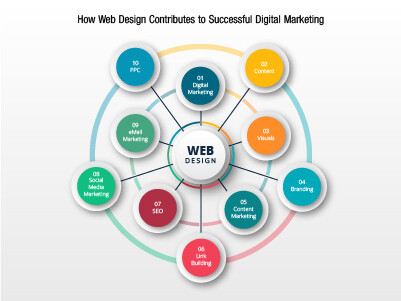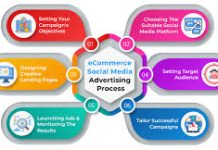How Effective Web Design Can Transform Your Digital Marketing Strategy
When you think about your digital marketing strategy, have you considered how effective web design can make a significant difference? A well-designed website not only improves user experience but also plays a crucial role in enhancing your brand’s credibility and visibility. By focusing on elements like intuitive navigation and mobile responsiveness, you can engage visitors more effectively and keep them on your site longer. But what specific design elements should you prioritize to truly elevate your marketing efforts? The answer might surprise you.
User experience (UX) plays a crucial role in web design and digital marketing strategies. When you prioritize UX, you create a seamless and enjoyable experience for your users. This leads to higher engagement, as visitors are more likely to stay on your site longer and explore your content.
A well-designed UX enhances your brand’s credibility and fosters trust, making users more inclined to convert into customers. Additionally, focusing on UX can improve your site’s search engine rankings, as search engines reward websites that deliver great user experiences.
Effective design hinges on several key elements that can elevate your website and enhance user engagement.
Start with a clean layout that guides users naturally through your content. Prioritize readability by choosing contrasting colors and legible fonts. Use high-quality images to capture attention and convey your brand’s message effectively.
Ensure your navigation is intuitive; users should find what they need with minimal effort. Incorporate white space strategically to avoid clutter and create a balanced appearance.
Responsive design is crucial, too—your site must look great on all devices. Lastly, don’t forget to include clear calls-to-action that prompt users to take the desired steps.
How does web design influence your SEO performance? A well-structured website improves your chances of ranking higher in search results.
When you prioritize user experience through intuitive navigation, it keeps visitors engaged, reducing bounce rates. Search engines notice when users spend more time on your site, which signals quality content.
Moreover, optimized images and fast loading times enhance your site’s performance, crucial for SEO rankings. Your choice of headings and tags also matters; effective use of keywords boosts your visibility.
Responsive design ensures your site looks great on any device, which is increasingly important for search engines.
Ultimately, investing in effective web design isn’t just about aesthetics; it directly impacts your SEO strategy and your ability to attract organic traffic.
Enhancing Mobile Responsiveness
A well-optimized mobile experience is crucial for capturing a broader audience in today’s digital landscape. With more users accessing websites via smartphones and tablets, your site must be fully responsive, adapting seamlessly to different screen sizes.
This means using flexible layouts, images, and CSS media queries to ensure your content looks great on any device.
You should prioritize fast loading times, as slow sites can frustrate users and lead to higher bounce rates.
Test your site regularly on various mobile devices to identify any issues and refine the user experience.
Building brand credibility is essential for establishing trust with your audience and encouraging long-term relationships. You can enhance your brand’s credibility through effective web design by ensuring your site looks professional and polished. Use high-quality images, consistent branding, and a clean layout to convey reliability.
Additionally, incorporating customer testimonials and case studies can showcase your expertise and build trust. Make sure your content is clear, informative, and free of errors; this reflects your attention to detail.
Also, ensure your website is secure with HTTPS; visitors feel safer sharing their information.
Finally, an active presence on social media can reinforce your brand image and demonstrate engagement, further solidifying your credibility in the eyes of potential customers.
How Does Web Design Influence Customer Retention Rates?
Web design significantly impacts customer retention rates.
If you create an intuitive, visually appealing site, visitors are more likely to stay engaged, return for future visits, and recommend your brand, boosting loyalty and satisfaction.
What Role Does Color Psychology Play in Web Design?
Color psychology influences your web design by evoking emotions and guiding user behavior.
When you choose colors wisely, you can enhance user experience, create brand recognition, and ultimately drive engagement and conversions on your site.
Can Web Design Affect Social Media Engagement?
Absolutely, web design can significantly impact social media engagement.
When your site’s visually appealing and user-friendly, visitors are more likely to share content, increasing your reach and fostering a community around your brand.
How Often Should I Update My Website Design?
You should update your website design every couple of years or whenever you notice it looks outdated.
Regular updates improve user experience, keep your content fresh, and ensure your site meets current web standards and trends.
What Are Common Web Design Mistakes to Avoid?
When you’re designing your website, avoid cluttered layouts, slow loading times, and poor navigation.
Don’t forget about mobile optimization and inconsistent branding, too.
These mistakes can drive visitors away and harm your credibility.
In today’s digital landscape, effective web design isn’t just a nice-to-have; it’s essential for your marketing strategy. By focusing on user experience, incorporating key design elements, and ensuring mobile responsiveness, you’ll not only boost engagement but also improve your SEO performance. Plus, a polished look builds brand credibility and trust with your audience. Embrace these principles, and watch as your marketing efforts yield impressive results in attracting and retaining customers.



